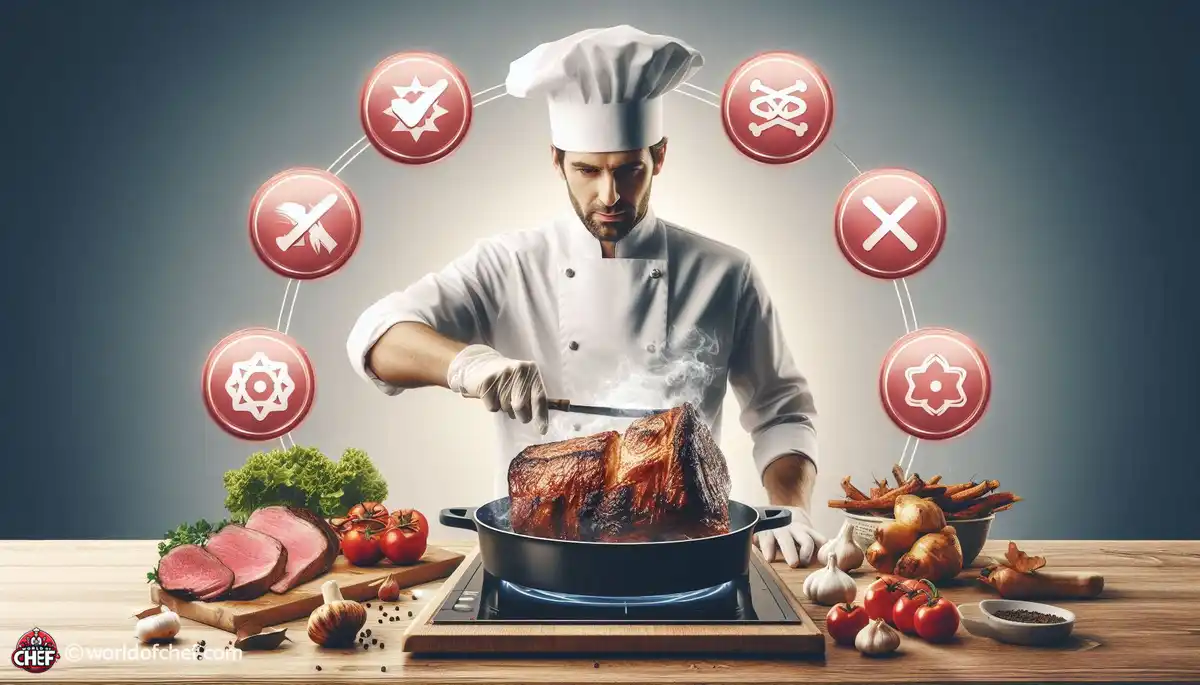
Simmering with Spices: Infusing Flavor into Your Dishes
Emery Donley - Oct 8, 2024 - 8 min read


Many aspiring chefs forget to really learn their oven. Ovens are a far cry when it comes to temperature and heat dispersal, meaning a dish is best hoped to be unevenly cooked. Most people commit the mistake that if an oven is set at the correct temperature, then the heat would spread out evenly. However, most ovens have what is termed hotspots or even may be running at a different temperature than the allocated time. An oven thermometer is an investment one should make to accurately determine the internal temperature and then adjust.
The other error is that people do not preheat the oven. Preheating is one of the most important aspects in uniformity because it helps the oven to be heated to the right temperature before food is put inside. In case one is hurried, the food might not cook evenly or it might take longer, hence one's dishes might dry up or be undercooked. One should always observe the recipe's preheating procedure and allow enough time for the oven to get heated.
The right choice of roasting pan would make a successful roast. A pan that is too small will overcrowd food, thus not allowing sufficient air circulation and leading to steaming instead of roasting. On the other hand, using a pan that is too large would result in evaporation of juices thus dries up the meat or vegetables. Use one that fits comfortably with some space left around the ingredients to promote even browning and caramelization.
Material used in the roasting pan also influences cooking. Although stainless steel and cast iron are widely used because of their strength and heat retention capabilities, sometimes they can react with acidic ingredients and pass off-flavors to the dish. Non-reactive materials like ceramic or glass are suitable alternatives for acidic foods but might not give the same crispy crust. Ingredients and method of cooking will determine which material of pan is chosen.
Proper preparation of ingredients before roasting can make all the difference in the outcome. One common mistake is the failure to remove excess moisture from the surface of food, especially meat. Moisture creates steam in the oven, which inhibits browning and crisping. Patting meat or vegetables dry with paper towels before seasoning and roasting can ensure better caramelization and texture. Excessive marinating of ingredients leads to excess moisture, thus ending up soggy instead of crispy exteriors.
The other possible trap is over-seasoning or under-seasoning. While seasoning generously produces a good flavor, it is equally important not to drown the real taste of the food with over-seasoning. One must balance, making use of salt, herbs, spices, and aromatics that complement but do not overpower the food. Season to taste throughout, ensuring the final dish tastes great.
One common error in roasting pan overcrowding prevents the proper spread of heat and air. In overcrowded pans, many ingredients end up stuck on top of each other and tend to steam instead of roast, which yields mushy and unevenly cooked dishes. To prevent this, space the ingredients in a single layer and give ample space between every piece to ensure caramelization and browning. To prevent overcrowding, consider multiple pans or batches.
Not Turning: Failure to rotate the pan or turn over ingredients is a common mistake during roasting. Even in ovens, hot spots will sometimes make one part of the pan cook much quicker than the other side. You would end up getting the ingredients either partly raw on the side where you are yet to get sufficient cooking time or too dry or even burnt, thus achieving a good result from browned parts that will leave unevenness and hence uneatable. Half way turn for uniform browning.
This is one of the most common mistakes people make. They keep opening the oven door to check on their food. Every time they open the oven door, heat escapes, which extends the cooking time and ruins the final result. Use a timer and let the recipe tell you when the food is done. Use an oven light or look through the oven window to check on progress without having to open the door.
Undercooked or overcooked food can be the result of relying on an inaccurate or malfunctioning thermometer. One should invest in a good instant-read thermometer to ensure that the internal temperature of meat is reached to a safe level of doneness. Insert the thermometer into the thickest part of the meat, away from bones or fat, for accurate reading. It is better to be safe than sorry when it comes to food safety and optimal flavor.
Most chefs tend to omit resting time after removing the food from the oven before carving or serving. Resting will allow the juices to seep through the meat, thus having juicier and flavor slices. Tent loosely with foil and let it rest at least 10-15 minutes before carving to achieve maximum tenderness and moisture retention.
Incorrect carving can make an otherwise well-roasted dish go wrong. Slicing meat against the grain or slicing it too thin can make the texture very tough and stringy. Take the time to understand the grain of the meat and carve across it to get tender slices. Make clean cuts using a sharp carving knife, preserving the integrity of the roasted ingredients. Practice makes perfect in carvings, and it takes time to hone the skills.

Emery Donley - Oct 8, 2024 - 8 min read

Russell Comeaux - Oct 8, 2024 - 8 min read

Walter Backus - Oct 7, 2024 - 8 min read

Samantha Thames - Oct 7, 2024 - 6 min read